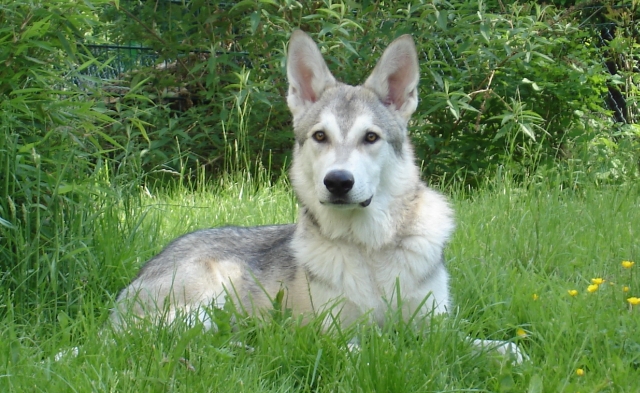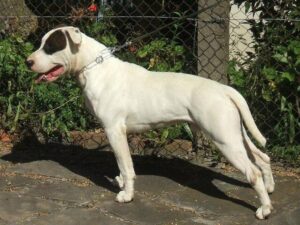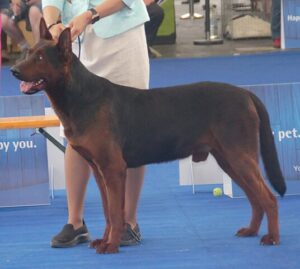The Saarlooswolfdog hails from the Netherlands and was created in the 1930’s by crossing a German Shepherd with a Eurasian Grey Wolf, and then developing the resulting offspring into a breed over time. Some of the dogs were used as guide dogs for the blind, but nowadays they aren’t often used for this task as the particular traits needed for this work are rarely seen in the line. Their current primary purpose is as a devoted pet – albeit one which requires the right home. They are not a breed for just anyone and do require experienced homes only! The breed was officially recognized by the Dutch Kennel Club in 1975. They are intelligent, sensitive to their owner’s emotions and curious about the world around them.
The SWD is a rare breed with a small gene pool, which means breeders must be dedicated and willing to put much thought into each litter, making sure to keep the breed as a whole as healthy as possible. In order to expand the gene pool, a couple of outcross programs are being conducted and strictly recorded in the Netherlands. Look-alike breeds such as the White Swiss Shepherd and Siberian Husky (among others) are being crossed with the breed in order to produce a new generations of dogs (F1) which are then health tested, evaluated and bred back into the main line. After 4 generations the resulting offspring will again be able to be called Saarlooswolfdogs. This endeavor is helping keep the breed healthy and hopefully in existence for many years to come! As it is, most individuals live around 15 years and are healthy, but the outcross programs are in place to keep this so.
Although Saarlooswolfdogs look very similar to wolves and even have wolf ancestry in their lines, they are not wolves themselves. In fact, some are further back from wolves lineage than modern high-content wolf hybrids. This isn’t a bad thing at all – in fact, living with a high-content wolf hybrid is not for the faint of heart and can be more akin to living with a wild animal than a dog! Whereas a SWD has the best of both worlds – a true dog with a “dog brain” that looks very similar to a wolf. Although he has some “wolfy” characteristics (such as a high awareness of pack dynamics), it is more like living with a primitive breed than a wild animal (primitives are a group of dogs which are more independent in general). A 2019 genomic study found that there was between 18-33% Grey Wolf in the breed, depending upon the individual. 
The SWD is a very intelligent breed that loves to learn and, in fact, requires a job in order to be happy. Like his Shepherd ancestors he has a large drive to “do” and should be given obedience training from an early age, followed by opportunities to work. Unlike Shepherds, he does not make a good guard dog (too skittish around strangers) and so his job/s probably shouldn’t involve guarding work. Before training even begins, it is vitally important that thorough socialization takes place as this breed requires extensive socializing to people, places and situations!
What type of owner is a good match for the Saarlooswolfdog? For starters, the SWD should only be owned by active people who are willing to spend plenty of time exercising the dog’s body and mind. A potential owner must also understand that this breed is quite reserved around strangers and isn’t going to say hi to everyone they meet while out on a walk. Rather than meeting people with excitement or aggression, the natural tendency is to run or hide behind their owner. In addition, they can suffer from separation anxiety and require that the owner be home frequently. Don’t let their highly-independent personalities fool you – they need plenty of company throughout the day. Living with another dog can help with their social neediness but one must be more cautious when introducing cats or small pets as the SWD does have an innate prey drive. Finally, this dog may do better in a home without young children.
The size of the SWD can definitely cause heads to turn – this breed can range from 24 up to 30 inches tall, which combined with the average weight of 100 pounds make this a giant breed. With an athletic but rangy build, he comes across as a huge wolf at first glance. Even his coat, which is short yet thick and often including a thick “mane” of hair around the neck, is very wolf-y in appearance. Colors range from shades of gray or brown (both with lighter markings underneath the dog), to solid cream or pure white.



